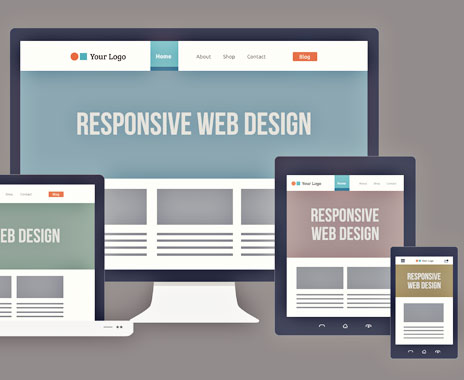Q: I'm thinking about updating my website soon. Anything I should know for that process?
A: With social media and mobile being so prominent in the marketing landscape these days, many people have stopped tending to their websites. But your website can continue to play a critical role in your company's marketing and communications strategies. The way it plays that role, however, needs to change.
To best understand your website’s new role, consider the following contrasts between what a website might have been in the past and what a site is when it’s at its best today. Here are six comparisons between what a great website is and is not today:
1. Your website is not just another marketing and communications tactic—it is the hub of all those activities. With a growing mix of earned or paid media in your marketing toolbox, it’s important to maximize the value of owned media like your website.
Consider your site as the clearinghouse for all other online activity. Design your site so that people can use it to access your social media accounts, apps, newsletters, ads, pages on review sites, deals, and other content that may be on other channels. And to the extent you are able, use URLs, QR codes, and links on those other media and channels to direct users to your site so they can access more information and engage in different ways. By integrating all your efforts, you provide people more options to learn about and engage with your brand, which, in turn, produces greater reach and relevance.
2. Your website is not an ad—it is a vehicle for two-way communications. If you are using your website simply to push outbound messages, you are only utilizing half of its capabilities. Your site can be used to collect valuable information about your customers. By using cookies and analytics, which are readily available through Google Analytics, you can glean data that can be used to develop useful customer profiles. You can identify customers’ interests, the other brands and products they buy, where they are and where they’re going, etc. Of course, this information must be collected with people’s permission, and it must be used and stored responsibly.
You can also solicit information directly from visitors by asking them to complete a user profile, participate in a survey, vote on a desired outcome, or simply give feedback. And definitely invite people to sign up for ongoing communication with you, whether it’s a newsletter, text messages, or other channels. A well-designed site encourages interaction and makes people feel they are integral, valued members of your brand community.
3. Your website is not an artifact—it is a media channel. Time was, you could design and publish a website and then pretty much forget about it. Today, people’s expectations for fresh content and new experiences are at an all-time high, so a static website just won’t cut it anymore.
Think about your site less as a brochure and more as a magazine or a news site. These media publish a steady stream of content that regularly draw people in. Just as you have developed a supply chain for your products, you need to develop a supply chain for your website content. Invest in the production and coordination of stories, news, interviews, recipes, etc.; develop systems to ensure content quality and consistency; and create processes to produce content efficiently.
Thinking about your site as a magazine also shapes the kind of content you provide on it. The best magazines provide entertaining and useful information. They tell stories, feature people, and relate to readers’ interests and activities. Your website should do the same, publishing content that is fun, timely, and relevant to your target customers. Remember that people use your site with a “what’s in it for me?” mentality.
4. Your website is not an initial destination—it is a found discovery. Some customers may go online with the express purpose of going to your website, but most are more likely to start with a search. With thousands of websites for restaurants in your area out there, it’s unlikely that your website will be found unless it’s Web-search friendly. Ensure that you have strong search engine optimization (SEO) strategies and implementation. Identify the keywords you should use and integrate them into your site properly so that your site can be found easily by your target.
5. Your website is not a document—it is a digital platform. According to Statista, 17.4 percent of Web traffic now comes through mobile devices, so ensure you use a responsive design to make your website mobile friendly. Using PDFs to make your menus, nutritional information, and locations downloadable is helpful, but don’t use them exclusively. For mobile users, downloadable documents eat up bandwidth and can be difficult to view. Plus, HTML content is more search-friendly than that found in PDFs or other file formats. Incorporate video and audio to take advantage of your site’s digital capabilities.
6. Your website is not a crapshoot—it is a measurable, adaptable tool. Web analytics can tell you how much traffic your website generated in a given time period, which pages are getting the most visits, what content is driving people to sign up for your newsletter, and much more. Don’t just launch your site and hope for the best. Use the data to figure out what’s working and what’s not, and to optimize your site on a regular basis.
Recent developments in media and technology don’t decrease the need for a great website—they increase the potential for creating one.












